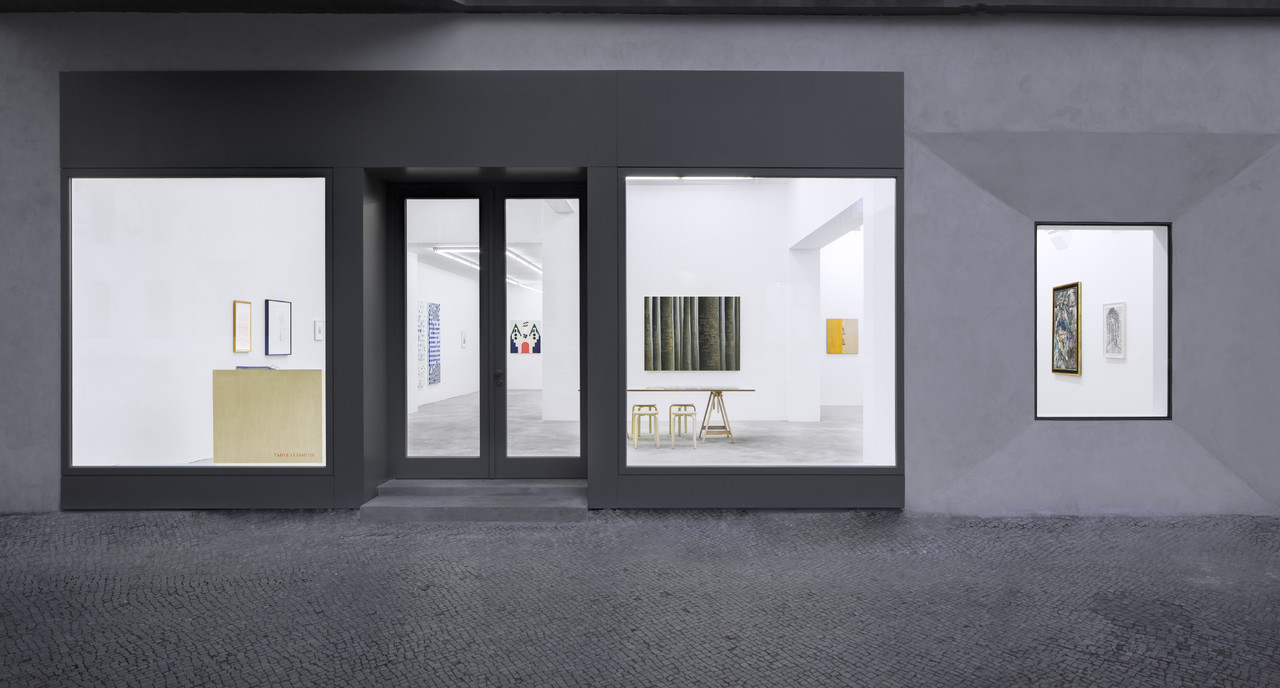Esteban Jefferson
On Value
9 March – 13 April 2024, Kurfürstenstraße 156, Berlin
Tanya Leighton, Berlin is pleased to announce ‘On Value’, featuring new works by New York-based artist Esteban Jefferson. Occupying both the upper and lower levels of the 156 gallery, Jefferson’s exhibition comprises of paintings and a collaborative sound sculpture that further his study of implicit biases encoded into museum display. This current body of work grew – in the words of the artist – out of his interest in “the ways institutions value some artworks over others,” especially how “ideas of value vary depending on the cultural and ethnic backgrounds” of the objects in question. At the centre of the exhibition’s query is the controversial British Museum, whose storied collection – the largest in the world – is a target of an increasing number of repatriation demands.
While artists have long critiqued museums as sites for ideological conditioning, it is only in recent decades that calls to “decolonise” them have moved from the periphery to the centre of art discourse. Decolonisation in this sense goes further than mere calls for repatriation; it cannot be simplified to acts of redress. On the contrary, decolonisation requires recognising that museums as such owe their very existence to a worldview that once ordered humans into two strata: those who are history’s protagonists and the others who make up its surplus populations. Disentangling colonialism’s legacy from the modern museum requires affirming that heritage institutions presuppose that a single collection can provide a totalising picture of the world, as if to stand at an authoritative remove from it. Nowhere else does one see the persistence of this conceit more clearly than in the discourse of stewardship.
Opponents to the British Museum’s repatriation of artefacts routinely argue that its “state-of-the-art” infrastructure can better care for objects that once belonged to cultures in formerly colonised nations. Therefore, they suggest, Western institutions like the Museum should be considered stewards who care for a global culture on behalf of the world until such people are equipped to do so themselves. Aside from the striking paternalistic attitude behind such a claim, this position ignores that the British Museum has been the subject of a series of highly publicised failures to adequately care for its collection as well as a scandalous dismissal of one of its curators over accusations of theft. But the stewardship argument also omits from the debate the following: Who has the right to define what it means to care for a people’s heritage? It is the above question that Jefferson’s work calls on the viewer to contemplate.
Upon entering the gallery, the viewer is met with the cacophonous sounds of museum spaces – metal detector beeps, the drone of fans, indecipherable chatter – taken from field recordings that emanate from an antique air-grate-turned- transducer. From the outset, then, Jefferson’s soundscape foregrounds the museum environment as the chaotic pedestrian thoroughfare such places so oftentimes feel like, in stark contrast to the image of the monastic, solitary space of quiet reflection they wish to project. In the first room hang two works depicting paintings delicately wrapped in polyethylene sheets. In the adjacent room hangs a study of the British Museum’s fragments of ancient Assyrian wall reliefs foregrounded by an industrial fan, presumably set up to combat humidity levels.
Commenting on the odd out-of-context equipment, Jefferson recalls being struck by “the insane amounts of giant industrial fans throughout the museum” placed right in front of the reliefs, which not only diminished the viewing experience but also drew attention to the British Museum’s struggle to control climate conditions. The juxtaposition of the ad hoc and reactive nature of the fans as opposed to the preemptive and considered craft behind the wrapped paintings is suggestive of a larger conversation about how society venerates the sacredness of “works of art” versus what it deems “historical specimens”. To again quote the artist, the “fan is such a blatant and beautifully ironic symbol of the museum’s (and empire’s) inability to properly contextualise and care for an artwork.”
‘On Value’ might be described as a contemplation on the museum that aims to disabuse the viewer of the image of the museum as a meditative space. In the spectator’s visual field are not only the clutter of devices haphazardly placed to “protect” the collection but also the residue of colonial attitudes that allow such steps to be deemed acceptable in the first place. Moreover, the exhibition does little to accommodate the viewer’s impulse to retreat into their interior faculties as the constant beeping and droning of the artist’s soundscape seems hostile to such stillness. In other words, Jefferson’s work suggests a refusal of the fantasy that anyone can stand at a contemplative remove from the world around them.
